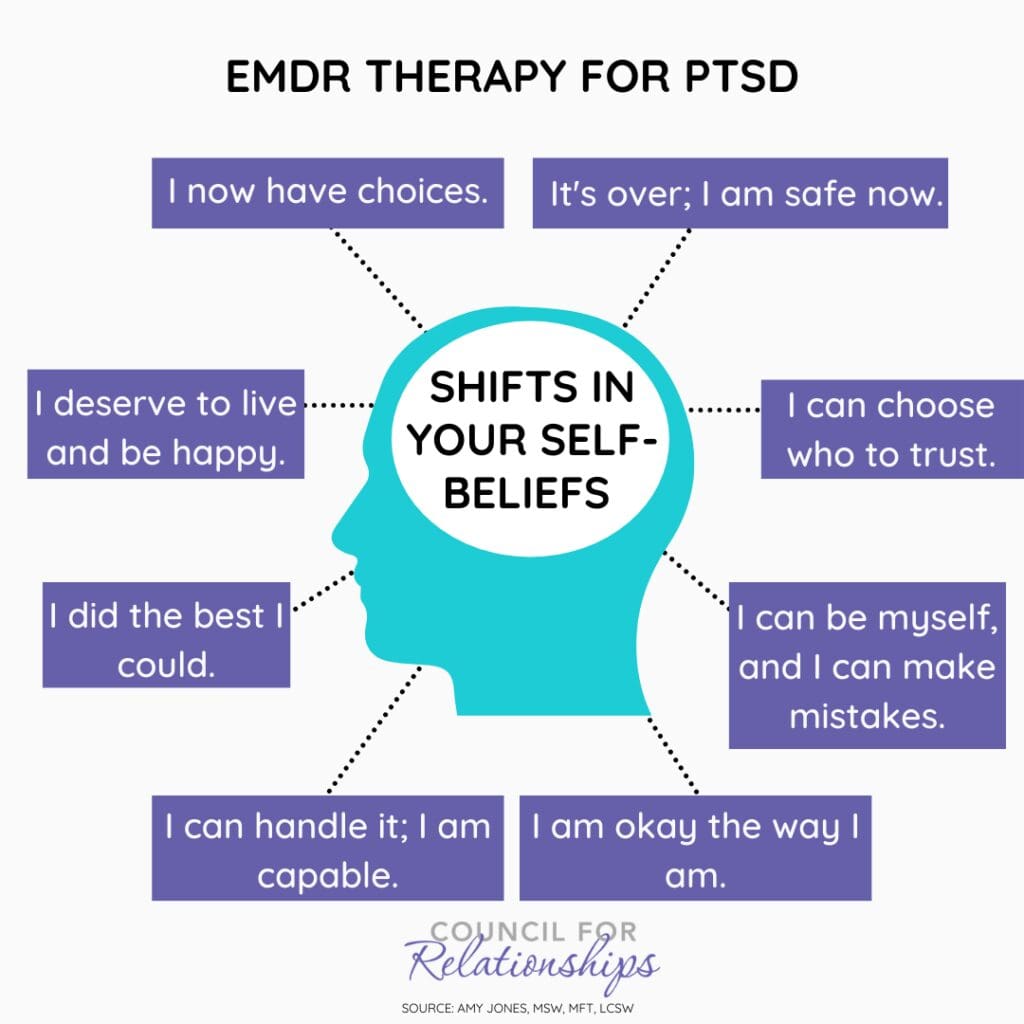Licensed emdr therapists nyc practice structured methods for healthy healing
Exactly How EMDR Therapy Functions: a Detailed Check Out the Refine and Its Efficiency
EMDR therapy has become a popular treatment for trauma-related disorders. Its organized approach includes different phases made to assist in the handling of distressing memories. Central to this method is the principle of reciprocal stimulation, which plays a necessary duty in just how memories are refined. Understanding these aspects discloses much about the treatment's efficiency. What particularly takes place during an EMDR session, and exactly how does it affect the healing trip?
Comprehending the Principles of EMDR Treatment
EMDR treatment, or Eye Movement Desensitization and Reprocessing, runs on the property that unsolved traumatic experiences can hinder psychological wellness. This ingenious restorative strategy aims to help with the processing of traumatic memories, enabling people to acquire a healthier point of view on their past. Central to EMDR is the idea of reciprocal stimulation, usually achieved through led eye motions, which is thought to help incorporate traumatic memories into an extra flexible structure.

The Eight Stages of EMDR Therapy
The procedure of EMDR treatment unravels over 8 distinctive phases, each designed to guide clients through a structured approach to recovery injury. The very first stage involves history-taking, where the specialist evaluates the client's background and determines target memories. In the second stage, clients discover leisure strategies to manage distress. The third stage concentrates on identifying negative beliefs connected with the stressful memory.
The 4th phase is where the desensitization procedure begins, allowing customers to process the distressing memory. The 5th phase involves mounting positive ideas to replace the negative ones. In the 6th phase, customers are assisted to evaluate their physical and emotional responses to the refined memory. The 7th phase highlights closure, helping clients return to a state of balance. The 8th phase includes reevaluation, where specialists and customers assess development and address any kind of residual distress. This detailed technique promotes a path to healing and resilience.
The Role of Bilateral Excitement
Bilateral stimulation is an essential element of EMDR treatment, helping with the handling of stressful memories. This technique involves alternating stimulation of both hemispheres of the mind, commonly achieved via eye movements, acoustic tones, or responsive sensations. The objective of reciprocal stimulation is to engage the mind's all-natural details processing system, which might become disrupted complying with trauma.
By triggering both sides of the mind, bilateral excitement aids customers access and recycle upsetting memories in a much more flexible way. This method motivates the assimilation of terrible experiences, decreasing their psychological cost and allowing clients to create brand-new perspectives.

Furthermore, bilateral stimulation might promote leisure and minimize anxiety throughout sessions, developing a more secure environment for customers to challenge excruciating memories. Eventually, this approach enhances the restorative process, allowing people to move toward recovery and resolution.
Proof Supporting the Performance of EMDR
Research study has actually revealed that EMDR treatment is reliable in treating various mental problems, especially post-traumatic tension disorder (PTSD) Numerous studies have shown significant reductions in PTSD symptoms complying with EMDR therapy. A meta-analysis of randomized controlled tests discovered that EMDR was as efficient as cognitive behavior treatment (CBT) for PTSD, with long lasting results observed also months after therapy. Furthermore, the American Psychological Organization and the World Health and wellness Company back EMDR as a suggested treatment for trauma-related disorders.
Beyond PTSD, research study indicates that EMDR can likewise profit individuals struggling with anxiety, clinical depression, and phobias. An expanding body of proof sustains its usage in varied populations, including youngsters and professionals - licensed emdr therapists nyc. Generally, the accumulating research study emphasizes EMDR's prospective as a flexible healing alternative, leading the way for more expedition right into its devices and applications in psychological health therapy
What to Anticipate During an EMDR Session
Throughout an EMDR session, customers can Learn More expect a structured yet adaptable method focused on processing distressing memories. The therapist starts by developing a risk-free setting, where customers can feel comfy sharing their experiences. First discussions concentrate on determining details memories and associated adverse beliefs.
Clients are directed to concentrate on these memories while all at once involving in bilateral stimulation, commonly through directed eye movements or tapping. This twin emphasis aims to help with the handling of the injury, permitting clients to reframe their experiences and minimize emotional distress.
Throughout the session, therapists check clients' actions, adjusting the pace and method as required. Procedure might include leisure strategies or cognitive restructuring to reinforce positive beliefs. Generally, clients can expect a supportive environment that urges self-exploration and recovery, ultimately bring about a greater sense of psychological health.
Regularly Asked Inquiries
Is EMDR Treatment Suitable for Kid or Adolescents?
EMDR therapy can be suitable for youngsters and teenagers, supplied it is adapted to their developmental requirements (emdr therapy). Medical professionals click here for more info typically customize techniques to guarantee safety and security and effectiveness, sustaining more youthful populaces in handling injury and psychological distress
Exactly How Long Does EMDR Treatment Commonly Last?
EMDR treatment normally lasts in between 8 to 12 sessions, with each session varying from 60 to 90 minutes. Nevertheless, individual needs and the intricacy of injury can influence the overall duration of therapy.
Can EMDR Treatment Be Done Remotely or Online?
EMDR treatment can without a doubt be carried out remotely or online. Numerous practitioners have adjusted their approaches to online settings, allowing customers to participate in efficient sessions from the comfort of their homes, maintaining restorative benefits.
What Are the Prospective Side Results of EMDR?
Prospective adverse effects of EMDR therapy may consist of short-term psychological distress, enhanced anxiousness, vivid memories, and physical pain. Individuals might likewise experience fatigue or headaches complying with sessions, as the mind refines intense sensations and memories.
Exactly How Does EMDR Contrast to Standard Talk Treatment?

EMDR therapy, or Eye Movement Desensitization and Reprocessing, runs on the facility that unresolved distressing experiences can impede emotional well-being. The procedure of EMDR therapy unfolds over eight distinct phases, each made to direct clients via a structured strategy to recovery trauma. like this Bilateral stimulation is an important element of EMDR treatment, promoting the handling of stressful memories. During an EMDR session, customers can anticipate an organized yet flexible approach intended at processing stressful memories. Potential side impacts of EMDR treatment might consist of temporary psychological distress, increased anxiousness, vivid memories, and physical discomfort.